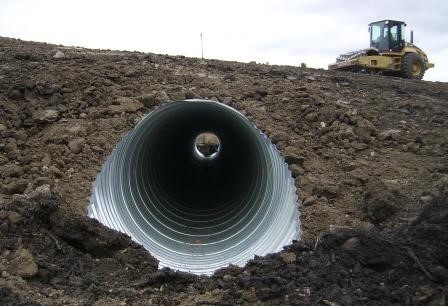Accuracy Pad Construction for Secure Foundations
Accuracy Pad Construction for Secure Foundations
Blog Article
Culvert Installment Made Easy: Step-by-Step Overview for Success
Mounting culverts might seem like a straightforward job, however ensuring a successful result needs careful preparation and execution. From choosing the suitable culvert dimension to integrating appropriate water drainage measures, each step in the installment process plays an important duty in the functionality and durability of the culvert system. By complying with a systematic technique and taking notice of vital information, the installation can proceed smoothly, lessening potential problems down the line. Keep tuned to uncover the crucial actions and factors to consider that can make culvert installment a smooth and successful undertaking.
Choosing the Right Culvert Size
Picking the appropriate culvert size is vital for making sure reliable water flow and structural honesty in culvert installation tasks - Pad Construction. The dimension of the culvert straight affects the flow capacity of water with the framework. A culvert that is as well little can bring about flooding and overflow, while one that is too big might lead to reduced water speed, possibly triggering sediment buildup and clogs
To identify the right culvert size, aspects such as the watershed area, top circulation prices, and hydraulic efficiency need to be very carefully taken into consideration. Computations based upon these specifications aid in picking a dimension that can properly take care of the anticipated water volume while reducing the risk of clogs and structural failing.
It is important to speak with design standards and criteria to guarantee that the chosen culvert size fulfills the job needs and regional laws (Pad Construction). By picking the appropriate culvert size, task supervisors can maximize water flow, prevent prospective problems, and improve the general effectiveness and long life of the culvert setup
Preparing the Installment Website
Effective culvert installment requires careful prep work of the installation site to make certain optimum structural support and functionality. Prior to beginning the installation process, it is crucial to remove the site of any kind of debris, vegetation, or blockages that can hinder the culvert's placement. Ensuring a level foundation is crucial for the correct positioning and stability of the culvert. This may entail rating the site to produce a smooth, also surface that can sufficiently support the weight of the culvert and any type of expected tons. In addition, proper compaction of the soil underneath the culvert is necessary to stop resolving or moving with time.
In addition, it is necessary to think about aspects such as dirt make-up, groundwater levels, and ecological influences when preparing the installment site. Performing a thorough website evaluation can help recognize any possible challenges or threats that might impact the culvert's efficiency. By making the effort to prepare the setup website correctly, you can aid assure an effective culvert installation that meets architectural requirements and guarantees lasting performance.
Placing the Culvert Correctly

The quality at which the culvert is placed is vital for keeping a correct incline for water flow. A steady incline assists avoid merging and advertises efficient drain. In addition, the culvert needs to be oriented properly to make sure that the inlet and electrical outlet are in the appropriate areas. This orientation is crucial for the culvert to function effectively in taking care of water circulation.
Backfilling and Condensing the Dirt
Proper backfilling and compaction of the dirt around the culvert is necessary to make certain security and stop prospective concerns in the future. Once the culvert is correctly positioned, the following important step is to backfill the area around it with ideal material. The backfill material should be free from rocks, particles, and raw material to avoid damage to the culvert. It is recommended to utilize granular material such as sand or crushed rock for backfilling, as it provides excellent drainage and compaction properties.
After placing the backfill product, it is crucial to compact it in layers of uniform density. Utilizing a compactor or a mechanical tamper, compact the soil gently to avoid harming the culvert. Compaction helps in lowering the opportunities of negotiation and makes certain uniform support around the culvert. It is crucial to small the dirt evenly on all sides of the culvert here to preserve its structural integrity.
Correct backfilling and compaction not just provide stability to the culvert yet additionally aid in preventing dirt disintegration and keeping the longevity of the culvert system.
Making Sure Correct Drain Assimilation
Incorporating reliable water drainage solutions plays an important function in the overall capability and long life of culvert installments. Correct water drainage integration is necessary for handling water circulation, protecting against erosion, and making certain the architectural stability of the culvert system. To attain this, it is vital to design an extensive drain plan that thinks about aspects such as the volume of water expected, the topography of the area, and the sort of soil existing.

In addition, integrating attributes like erosion control measures, such as riprap or plant life, can further enhance the effectiveness of the water drainage system. By very carefully planning and applying these water drainage options, culvert installments can function efficiently and withstand the test of time.
Verdict
In verdict, proper culvert installation is essential her explanation for keeping reliable drainage systems. By picking the best culvert dimension, preparing the installation website, placing the culvert appropriately, backfilling and condensing the dirt, and making sure appropriate drainage assimilation, success can be accomplished. Complying with these steps will certainly aid ensure the long life and efficiency of the culvert, eventually adding to the overall success of the water drainage click here now system.
Report this page